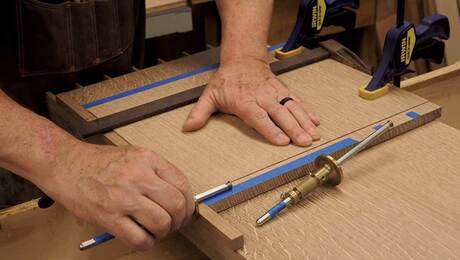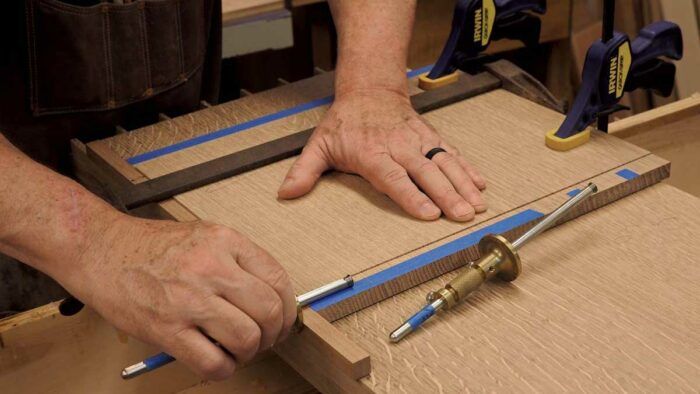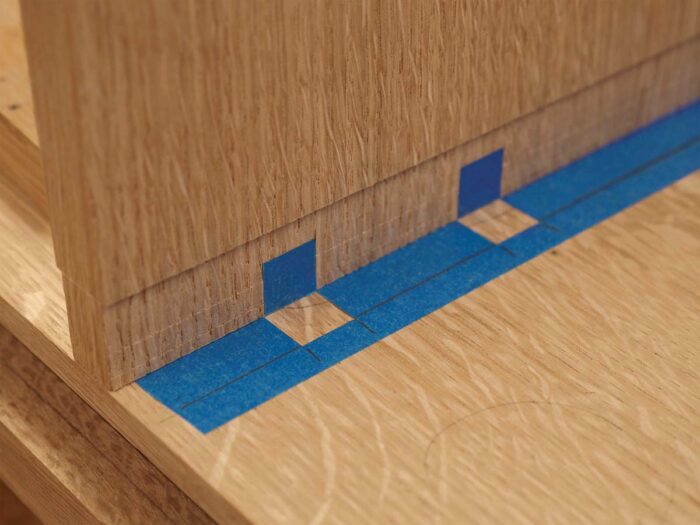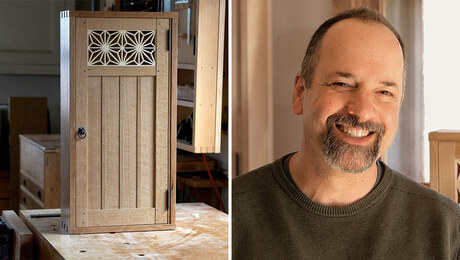task can make a big difference. Taking
the time to secure boards when scribing
and clamping a spacer in place rather
than holding it in place by hand results
in a much better start to a project.
“Take your time.” That’s what I tell myself when things start to get a little out of control in the shop.
At the beginning of teaching a weeklong class, I warn the students that this is an artificial way to be working. Along with the stress of navigating an unfamiliar shop and practicing unfamiliar techniques, there is the issue of time. To start with, woodworking for 8 to 10 hours a day is not something most of us are used to. In addition, allotting a arbitrary number of days to complete a project is often not realistic. That notion of self-assigned deadlines can compromise the experience of working in our own shops as well.
Yes, we often have expectations of what we want to accomplish in an hour or an afternoon in the shop. Sometimes we hit the mark, and sometimes we fall short. The danger lies in trying to speed the process to fit the time we have. One big lesson I’ve learned is that trying to go faster rarely leads to something getting done quicker. A piece of advice I offer students is that it’s going to take as long as it takes. Each of us has one ideal speed we work at, and trying to rush a process never ends up well. That’s easier to say than to do in the controlled chaos of a typical class, I know.
Back in my own shop, when I find myself rushing, when I’m trying to decide which next task is the most important—that is, the one that will get me to the finish line faster—I try to take a break. When I’m working on a project for the house, I tend to work at a brisk pace. That pace leads to a process and workflow resulting in a level of work I’m generally happy with, but one that often falls short of what I’d consider to be “perfect.” On other occasions—working on a commissioned piece, for example, where “perfect” is the goal—I find that it’s not just a matter of trying harder but that it often involves rethinking the way I work. Something as simple as the way I use a marking gauge can make a difference. While steadying a board with one hand and scribing with the other leads to generally accurate results, clamping the board in place, though a bigger hassle and more time consuming, offers an extra level of control. As a result, I spent a far larger portion of a recent afternoon in the shop laying out some mortises and tenons than I normally would. Despite the extra clamping and unclamping added to my routine, I really didn’t mind it. In fact, I enjoyed the time far more than if I had been rushing through the day. I was more in control during the process, and I was confident of the results when I was finished.
While we tend to focus on the quality of the end product while we are working, placing our sights on the quality of the time we’re spending in the shop just may get us closer to that piece we were hoping to make.
Sign up for eletters today and get the latest techniques and how-to from Fine Woodworking, plus special offers.





